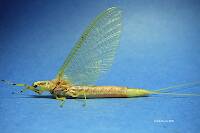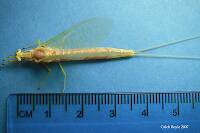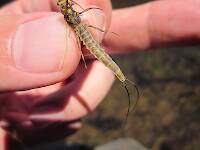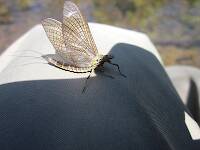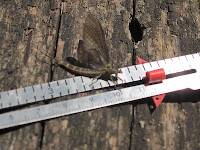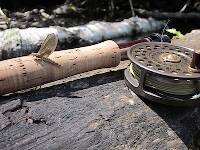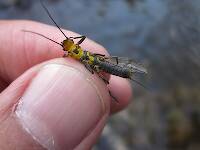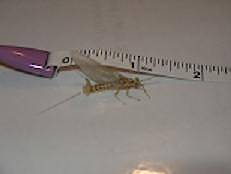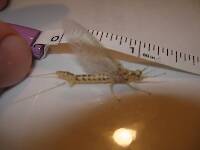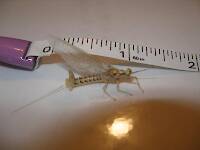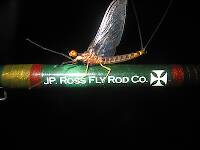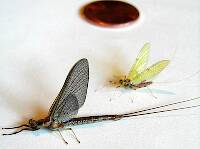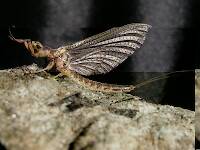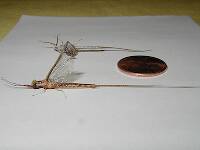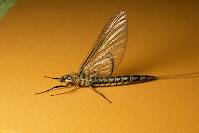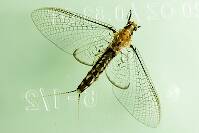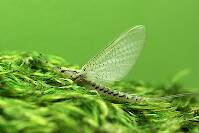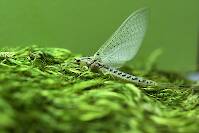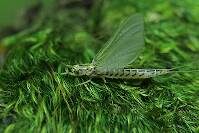
Hex Mayflies
Hexagenia limbata
The famous nocturnal Hex hatch of the Midwest (and a few other lucky locations) stirs to the surface mythically large brown trout that only touch streamers for the rest of the year.
Featured on the forum

Nymphs of this species were fairly common in late-winter kick net samples from the upper Yakima River. Although I could not find a key to species of Zapada nymphs, a revision of the Nemouridae family by Baumann (1975) includes the following helpful sentence: "2 cervical gills on each side of midline, 1 arising inside and 1 outside of lateral cervical sclerites, usually single and elongate, sometimes constricted but with 3 or 4 branches arising beyond gill base in Zapada cinctipes." This specimen clearly has the branches and is within the range of that species.

Troutnut is a project started in 2003 by salmonid ecologist Jason "Troutnut" Neuswanger to help anglers and
fly tyers unabashedly embrace the entomological side of the sport. Learn more about Troutnut or
support the project for an enhanced experience here.
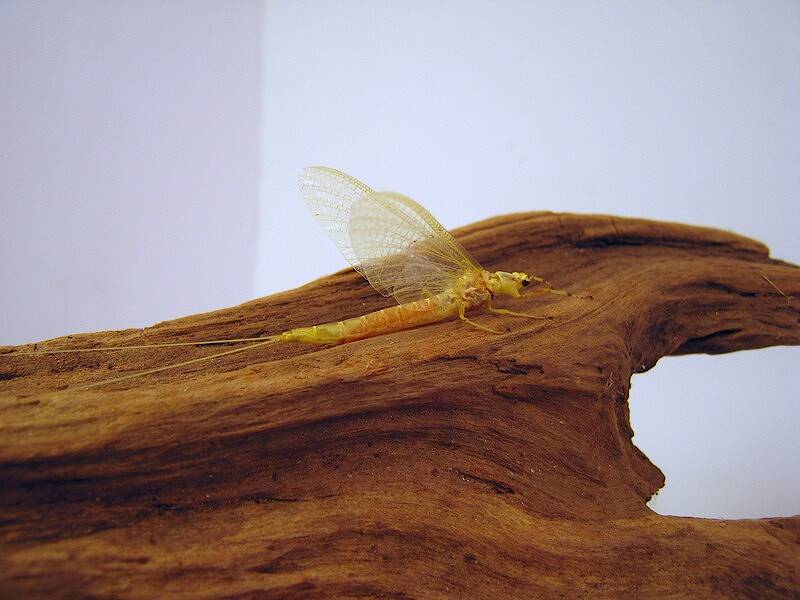
Calloway on Jul 9, 2008July 9th, 2008, 7:32 am EDT
Got some guys wanting to say the following is a Hex Limbata. I'm not sure what it is but a little light in color for the Hex's I am familar with. Would like to say golden Drake but only two tails.
Thanks
Thanks
GONZO on Jul 9, 2008July 9th, 2008, 9:28 am EDT
Keith,
This is Hexagenia limbata. That species displays tremendous variation in appearance over its transcontinental range. Sometimes the observed differences are due to this variation, sometimes they are due to the difference in coloration between male and female, and sometimes they are attributable to capturing the insect at various stages of darkening following a molt. Teneral (freshly emerged) insects will be much paler and will have less distinct markings than those that have had time to age and darken. This is true of nymphs, duns, and spinners. Your mayfly is a female imago (spinner) that has yet to express her egg packets.
This is Hexagenia limbata. That species displays tremendous variation in appearance over its transcontinental range. Sometimes the observed differences are due to this variation, sometimes they are due to the difference in coloration between male and female, and sometimes they are attributable to capturing the insect at various stages of darkening following a molt. Teneral (freshly emerged) insects will be much paler and will have less distinct markings than those that have had time to age and darken. This is true of nymphs, duns, and spinners. Your mayfly is a female imago (spinner) that has yet to express her egg packets.
Wiflyfisher on Jul 9, 2008July 9th, 2008, 9:56 am EDT
John S.
https://WiFlyFisher.com
https://WiFlyFisher.com
Quick Reply
Related Discussions
Topic
Replies
Last Reply
10
Feb 27, 2012
by Oldredbarn
by Oldredbarn
10
Jun 30, 2009
by Jmd123
by Jmd123




